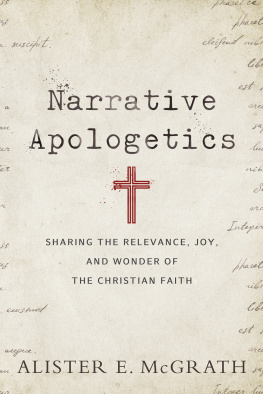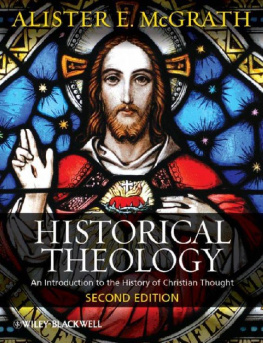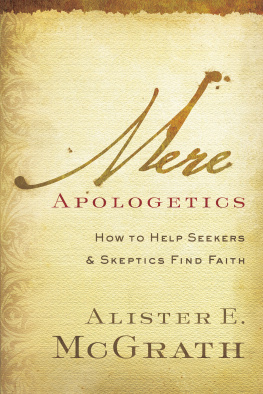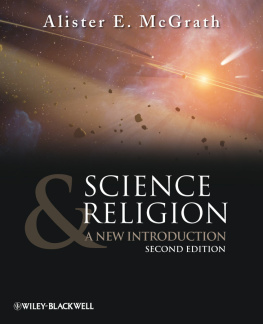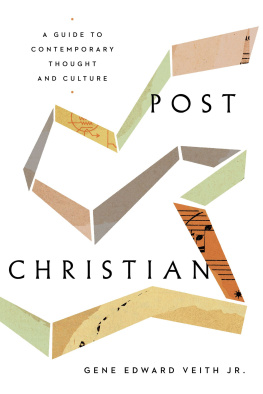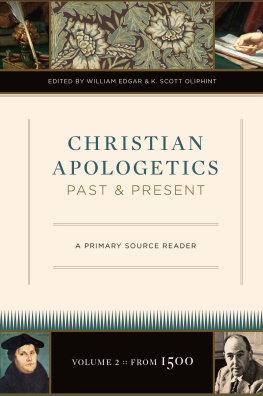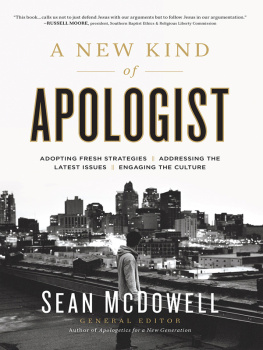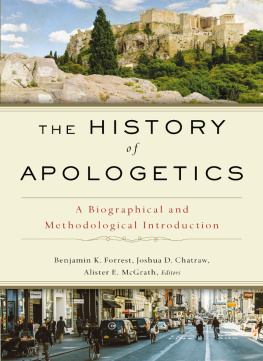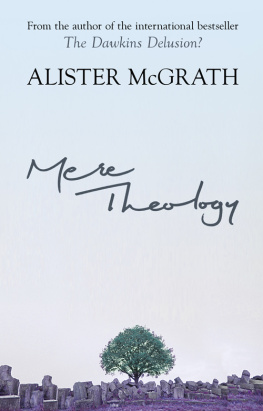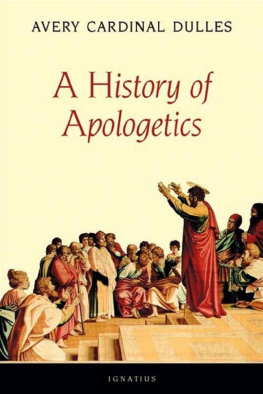2019 by Alister E. McGrath
www. bakerbooks.com
All rights reserved. No part of this publication may be reproduced, stored in a retrieval system, or transmitted in any form or by any meansfor example, electronic, photocopy, recordingwithout the prior written permission of the publisher. The only exception is brief quotations in printed reviews.
Library of Congress Cataloging-in-Publication Data is on file at the Library of Congress, Washington, DC.
Unless otherwise noted, Scripture quotations are from the New Revised Standard Version of the Bible, copyright 1989 National Council of the Churches of Christ in the United States of America. Used by permission. All rights reserved.
Scripture quotations labeled KJV are from the King James Version of the Bible.
Scripture quotations labeled NASB are from the New American Standard Bible (NASB), copyright 1960, 1962, 1963, 1968, 1971, 1972, 1973, 1975, 1977, 1995 by The Lockman Foundation. Used by permission. www.Lockman.org
Scripture quotations labeled NIV are from the Holy Bible, New International Version. NIV. Copyright 1973, 1978, 1984, 2011 by Biblica, Inc. Used by permission of Zondervan. All rights reserved worldwide. www.zondervan.com. The NIV and New International Version are trademarks registered in the United States Patent and Trademark Office by Biblica, Inc.
Contents
1. Introducing Narrative Apologetics
Why Stories Matter
Why Facts Are Not Enough
Why Apologetics Matters
The Rationality of Faith
Narratives, Intelligibility, and Meaning
Christianity as a Big Picture
Christianity as a Story of a Larger Kind
2. The Theological Foundations of Narrative Apologetics
H. Richard Niebuhr on the Retrieval of Narrative
The Consolidation of Narrative Theology
The Image of God: A Theological Interpretation of Storytelling
Understanding or Coping? The Question of Suffering
3. The Practical Application of Narrative Apologetics
Meeting Objections: God as a Projection
Explaining Significance: Narrating the I
Translation and Transposition: Visualizing Sin
The Story of the Exodus: The Hope of Deliverance
The Story of the Exile: Where Do We Really Belong?
The Story of Jesus Christ: Rendering the Love of God
A Parable of the Kingdom: What Do We Really Desire?
5. Strategies and Criteria for Narrative Apologetics
Strategies for Narrative Apologetics
Telling a Better Story
Seeing the Christian Story as a Metanarrative
Offering Criticism of Rival Narratives
Criteria of Relevance for Narrative Apologetics
Offering a Realistic Account of Our World
Creating Space for the Reader
Making Sense of Our Existence
6. The Christian Story and the Meaning of Life
Meaning and Function: A Crucial Distinction
Personal Narratives: The Embodiment of Meaning
The Christian Narrative and the Disclosure of Meaning
Identity: Who Am I?
Value: Do I Matter?
Purpose: Why Am I Here?
Agency: Can I Make a Difference?
7. Handing Over: Developing Narrative Approaches to Apologetics
Using Biblical Narratives
Using Personal Narratives
Using Cultural Narratives
Notes
Back Ads
Back Cover
Notes
Chapter 1 Introducing Narrative Apologetics
. Ursula K. Le Guin, Language of the Night: Essays on Fantasy and Science Fiction (New York: Berkley, 1982), 22.
. For the accessibility and imaginative stimulus of the Gospel narratives for children, see Melody R. Briggs, How Children Read Biblical Narrative: An Investigation of Childrens Readings of the Gospel of Luke (Eugene, OR: Pickwick, 2017).
. Marilynne Robinson, Gilead (London: Virago, 2005), 203.
. See, for example, Margaret R. Somers, The Narrative Constitution of Identity: A Relational and Network Approach, Theory and Society 23 (1994): 60549; Elinor Ochs and Lisa Capps, Narrating the Self, Annual Review of Anthropology 25 (1996): 1943; Crystal L. Park, Religion as a Meaning-Making Framework in Coping with Life Stress, Journal of Social Issues 61, no. 4 (2005): 70729; Joshua A. Hicks and Laura A. King, Meaning in Life and Seeing the Big Picture: Positive Affect and Global Focus, Cognition and Emotion 21, no. 7 (2007): 157784; Jonathan Gottschall, The Storytelling Animal: How Stories Make Us Human (Boston: Houghton Mifflin Harcourt, 2012). My focus in this book is on the narrative quality of human experience and existence, rather than on narrative as a literary genre .
. Edmund Arens, Wer kann die groen Taten des Herrn erzhlen? (Ps 106, 2): Die Erzhlstruktur christlichen Glaubens in systematischer Perspektive, in Erzhlter Glaube Erzhlende Kirche , ed. Rolf Zerfass, 1327 (Freiburg: Herder, 1988); my translation.
. John Stephens and Robyn McCallum, Retelling Stories, Framing Culture: Traditional Story and Metanarratives in Childrens Literature (New York: Garland, 1998), 323.
. Stephen Crites, The Narrative Quality of Experience, Journal of the American Academy of Religion 39, no. 3 (1971): 291311; Lewis P. Hinchman and Sandra K. Hinchman, eds., Memory, Identity, Community: The Idea of Narrative in the Human Sciences (Albany: State University of New York Press, 1997).
. Jeffry R. Halverson, H. L. Goodall, and Steven R. Corman, What Is a Master Narrative?, in Master Narratives of Islamist Extremism , 1126 (New York: Palgrave Macmillan, 2011).
. For this phrase, see Stanley E. Fish, Is There a Text in This Class? The Authority of Interpretive Communities (Cambridge, MA: Harvard University Press, 1980), 14774.
. Rowan Williams, Resurrection: Interpreting the Easter Gospel , 2nd ed. (London: Darton, Longman & Todd, 2002), 6162.
. Charles Taylor, Modern Social Imaginaries (Durham, NC: Duke University Press, 2002), 23.

